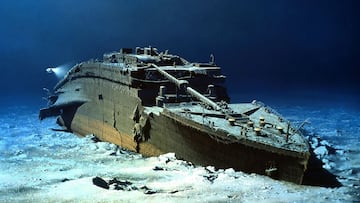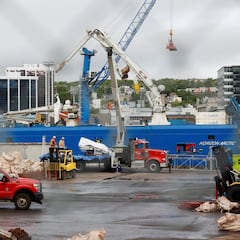Why human remains were never found at the Titanic wreckage
The Titanic sunk to the bottom of the Atlantic Ocean in 1912 but it took until 1985 for anyone to locate it.

111 years on, there are still plenty of mysteries and theories about the sinking of the Titanic, with endless questions still left answered. New discoveries are made about the tragedy year after year, with progress towards answering those questions hampered by the difficult location of the wreckage on the floor of the Atlantic Ocean. There is still plenty of investigation to be done, with limited exploration of the sunken vessel possible.
Depth of Titanic wreckage
The hull of the Titanic is approximately 3,800 metres deep and relatively close to Newfoundland and Labrador off the coast of Canada. With the passing of time, the ship’s remains have deteriorated, as you might expect, and it is believed that it will eventually dissolve almost completely due to the corrosive effect of salt water on the its materials. However, thanks to numerous investigate expeditions to the area, we do know that there is still a huge number of objects under water, many of which are the remains of the victims’ belongings.
What objects have been found near the Titanic?
Bottles of wine, shoes, suitcases are among the items that can be seen strewn across the ocean floor, reminders of lives that were cut short by the icy Atlantic waves.
But, crucially, plenty is still missing: human remains. Some 1,160 people went down with the Titanic. but no bodies have ever been found. There are multiple theories as to why, although experts have been unable to completely solve the mystery once and for all.
The effects of sea water
One thing that cannot be overlooked is that it took more than 70 years for the wreckage of the ship to even be located. When investigations began, everything had already long been exposed to seawater. However, it hasn’t been ruled out that there could still be bodies on board inside the deepest parts of the vessel, such as the engine room, which the water has had less of an effect on.
Related stories
What is clear, though, is that almost all of the missing bodies have been dissolving and will continue to do so until their eventual disappearance. Not only because of the salt water but also because of ocean animals and bacteria in the area, which feed on human tissues such as skin. According to marine archaeologist James Delgado, “even teeth” can dissolve at that depth.
Perhaps, then, the “mystery” of the missing bodies from the Titanic tragedy isn’t as cryptic as we thought after all.

